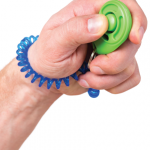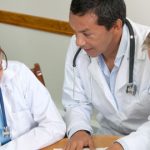
During the past few years, I have had the privilege, honor, and good fortune to attend international rheumatology meetings in Europe. While I would like to think that the invitations to go overseas reflect the current work from my laboratory (our studies on microparticles actually are pretty nifty), I also believe that seniority has something to do with my presence at the lectern. Honestly, I have been around quite a while and, therefore, gained a perspective on the field that only experience can bring. Also, there is a serious shortage of young academic rheumatologists in America, and old guys like me have to carry the flag to keep the Stars and Stripes flying at international congresses.

I, of course, like to travel, and, undaunted by showers of volcanic ash, train strikes in France, and cruise ships lurching wildly in North Atlantic storms (all recounted in the pages of The Rheumatologist), I journey to Europe where, away from home and with the leisure of time, I can reflect on life and the state of my subspecialty. The first few days are rocky, but once the effects of jet leg, Ambien, and cognac (a fitting denouement for the welcoming dinner) abate (cognac definitely needs a REMS), the world somehow looks clearer. As writers like The New York Times’ Thomas Friedman have emphasized repeatedly, the world is getting flatter, smaller, or closer, whatever your choice of metaphor.
Time was, Europe was a different place from America and, if you stayed in a hotel on the Left Bank or near the Spanish Steps, you were cautioned not to drink the water lest you become infected with amoebas or some other dreaded parasite that would launch your bowel into a perpetual high gear. Now, of course, we import water from Europe (Evian, Perrier, San Pellegrino), with more remote and obscure sources being sought every day because of their special medicinal properties from rare salts and minerals. Just as modern transportation makes it easy to ship a commodity as abundant and mundane as water around the world, it makes it easy to jet an American rheumatologist to give an hour-long lecture.
Meetings Still Have European Flavor
Despite many similarities with their U.S. counterparts, meetings in Europe have a unique character and style. The congress centers often are distant from the old part of the city (and hotels and restaurants) in a blander, less distinctive area where enough land was available to construct an expanse needed to house conferences with thousands of attendees. Although the average ancient European cathedral could hold the plenary session of the European League Against Rheumatism (EULAR) Congress, the usual venues are modern structures with all new-fangled electronic doodads that orchestrate today’s medical meetings, whether in Atlanta, Copenhagen, or Kyoto. Every lecture hall and conference room has an electronic panel board for light and sound that looks like that of mission control in the heyday of the Apollo space program.

